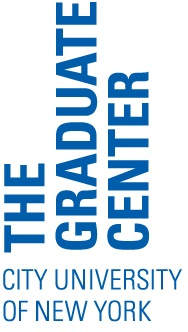Your LinkedIn Total Makeover

Photo by Siora Photography on Unsplash
LinkedIn is a professional social networking platform that is used by job seekers and established professionals across academic and non-academic workplaces. As we’ve written previously, LinkedIn is an important resource for graduate students to create an online presence and connect with colleagues in your discipline and beyond. In this blog post, we share some tips from the Rock Your LinkedIn Profile event at the GC featuring tips and advice from LinkedIn Customer Success Manager Kenneth Tong.
Step 1: Become Your Brand’s Ambassador
According to in-house research conducted at LinkedIn, the number one thing people spend time doing on the social network is looking at other peoples’ profiles. Within your profile page, what they look at first is your picture, followed by your name and your title. These are the most important parts to get right.
Your profile picture should look professional
Make sure it shows your face clearly. Think of how you envision your best self in a situation of work competency. What would you be wearing? What facial expression would you have? Use that as a guide for how your profile photo should look.
It’s a good idea to steer clear of photos that are overly clever or that display non-work related activities (including selfies and hobbies). Keeping it simple, straightforward, and engaging is the best recipe for an effective profile photo. And smile! Smiling makes people perceive you as friendly, approachable, and competent and makes them more likely to engage with you.
Your headline should succinctly express your work role
When writing your headline, think about keywords you want to be associated with. What are the keywords in your industry or the roles you’re pursuing? By including them in your headline, you’ll be more likely to pop up as a result in someone’s search query.
Once you’ve clarified some key terms to make your headline searchable, think about writing your headline as a “hook”—something intriguing and unique that expresses your personality and passion and stands out from the crowd. For example, “PhD candidate in anthropology at the CUNY Graduate Center” could be rephrased as “Experienced social scientist transforming information into knowledge in universities and beyond.”
Your About section should give a quick overview of your work role, passions, background, skills, and competencies
When writing your About section, think about it as an elevator pitch: the written equivalent of a 30-second introduction that gives the reader a global view of your personal brand, while engaging them through concise insights about your overarching passion and motivation.
The recipe for crafting your summary is identifying your passion, plus your value (skills and abilities), plus your personality. Write in the first-person voice to encourage the reader to feel a connection with your story. Your tone can be slightly less formal than it would be in a cover letter.
Your Experience section should serve as a resume (with some key differences)
For each line, emphasize your role and what projects you accomplished. The more you are able to quantify the accomplishment, the more convincing and credible it will look to your reader. Emphasize the scope, scale, and impact of your accomplishments.
Allow your personal strengths and values to shine through. Increase your discoverability by incorporating keywords (terms you think someone would search for if they were looking for someone like you). Add rich media to your LinkedIn profile, including academic or professional visuals.
Overall, think short and sweet when writing up your LinkedIn profile content to keep the reader engaged. Keep in mind that over 25% of LinkedIn profile views come from mobile devices. Access your profile on your smartphone to make sure it looks great on mobile web browsers.
Step 2: Become a Thought Leader in Your Communities
Once you have your profile set up, generate content like status updates and blog posts to add value to your network.
You can produce four different types of status updates:
- A university or department-based status update
Promote your participation in events, initiatives, or project outputs - A university culture update
Describe what it’s like to work there (including parties or events at departments or initiatives, volunteering activities, and so on) - Discipline or industry-specific content
Reflect your involvement in broader developments in the field you’re working in or in the industry you’re targeting for potential employment - Open jobs and career path updates
Emphasize the opportunity that you’re recruiting for, and put the reader in the shoes of what it would be like to work in that role
Add value to your LinkedIn network by becoming a member of groups and publishing blogs or newsletters
LinkedIn allows you to join up to 100 groups. Search for and join any group that may be applicable to your professional interests by using the search tab and selecting the filter for groups. Once you’ve joined a group or two, consider publishing a blog post with your take on some issues of concern to the community or posting a link to an interesting article that is relevant. With a global database of users, you’d be surprised the connections you can make by being an active and engaged member of the network.
Target the industries and specific companies you’re interested in working for
Identify potential employers; see how you’re connected to employees of those companies using the sidebar on their profile page.
Consider asking a mutual acquaintance for an introduction (such as, “Hi Angela, could you introduce me to Jennifer? I think I could add a lot of value to her projects”). Alternatively, consider messaging them yourself with a simple greeting such as: “Hi, we haven’t met before, but I’m interested in your work on natural language processing and I’d love to make a connection with you.”
Also check out the LinkedIn help menu to get detailed tutorials to explore more features that LinkedIn offers!




